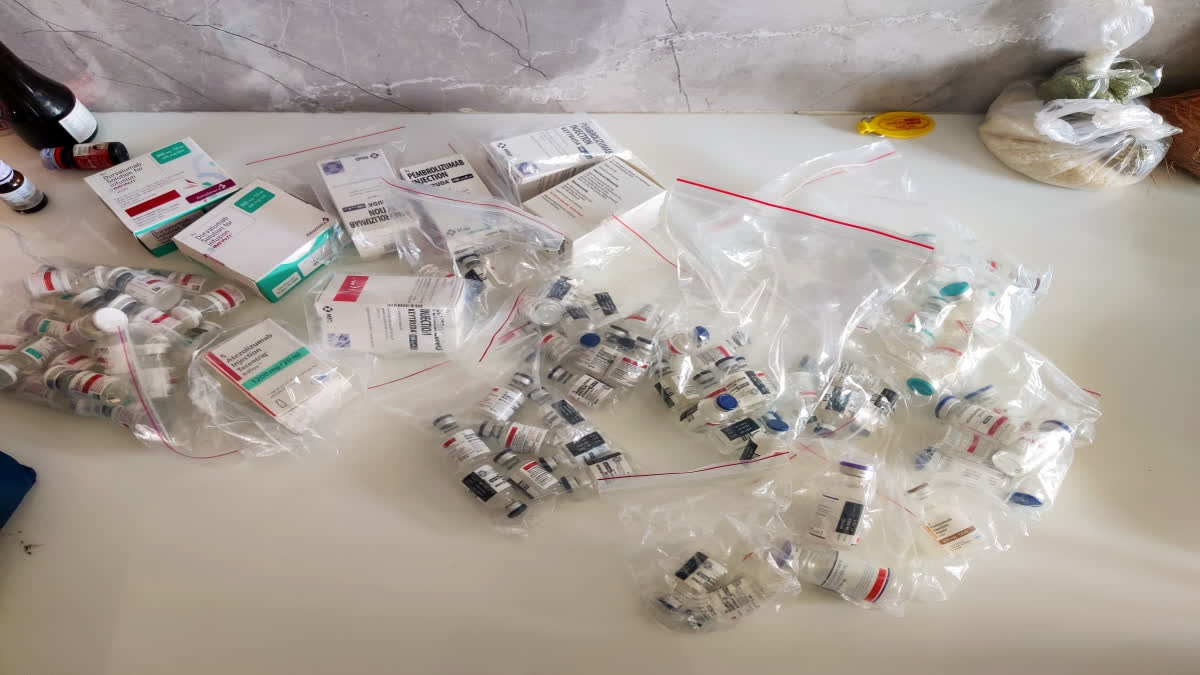Hyderabad: According to a latest Lancet study 60 per cent of the 29.9 lakh sepsis deaths in India in 2019 were caused by bacterial infection. The study alerts overuse or wrongful use of antibiotics, which can kill a person. Out of nearly 10.4 lakh sepsis deaths (33.4 per cent) were related to bacterial AMR that year, with 2.9 lakh sepsis deaths directly attributed to it. According to medical science, sepsis deaths occur when one’s immune system has a dangerous reaction to a bacterial infection and without treatment, can lead to organ failure.
What is AMR
Antimicrobial Resistance, AMR is the result of overuse of antibiotics used earlier in the patient's lifetime or wrongful use. With the rising rates of drug-resistant bacteria in India, treatment options are becoming increasingly limited, which are increasing health challenges simultaneously. Lancet predicts more than 39 million people around the world could die from antibiotic-resistant infection over the next 25 years as AMR is anticipated to worsen in the coming years. Based on a new study by the Global Research on Antimicrobial Resistance (GRAM) Project, Thai is the first global analysis of antimicrobial resistance trends over time.
"Understanding how trends in AMR deaths have changed over time, and how they are likely to shift in future, is vital to make informed decisions to help save lives,” said study author Dr Mohsen Naghavi, Team Leader of the AMR Research Team at the Institute of Health Metrics (IHME), University of Washington, USA.
To derive the results, the researchers used 22 pathogens, 84 pathogen-drug combinations and 11 infectious syndromes ( (including meningitis, bloodstream infections, and other infections) among people of all ages in 204 countries and territories, including India
India's relevance with the study’s outcome
The three most common resistant pathogens determined, especially for Indian body type are e.coli, which can cause gut infections; Klebsiella pneumoniae which can cause pneumonia and urinary tract infections and Acinetobacter baumannii, which is mainly associated with hospital acquired infections.
What are resistant bugs?
According to the Lancet study, lower respiratory infections and related infections in the thorax led to most cases of sepsis deaths in India, which makes about 27 per cent of the total. In 2029, 3.25 lakh children succumbed to bacterial infection of the five lakh deaths due to sepsis. Streptococcus Pneumonie was determined the deadliest bacterial infection among children under five.
Globally, deaths due to methicillin-resistant S. aureus (MRSA) increased the most with the death number tolling to 130,000 in 2021, which were doubled from 57,200 deaths in 1990. Resistance to carbapenems increased more than any other type of antibiotic, from 127,000 in 1990 to 216,000 in 2021.
In India, the highest fatal risk was the drug combination of aminopenicillin-resistant E.coli that caused at least 6.8 lakh deaths.



